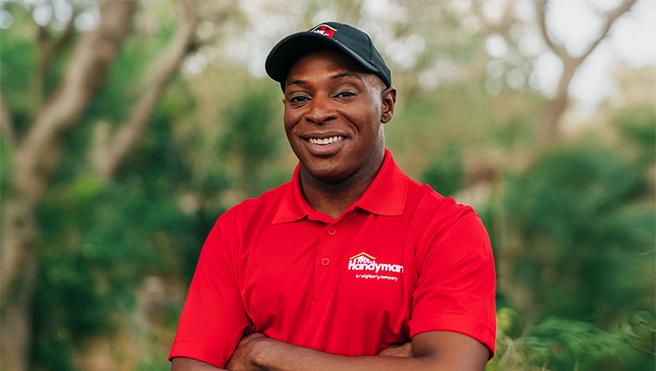Interior painting can invigorate any room, from updating kitchen cabinets to adding a splash of color to a living space. For your interior painting projects, you can trust Mr. Handyman® to deliver the level of quality you deserve with a worry-free guarantee.
Interior Painting Services
Give your home a fresh, updated look with professional interior painting services from Mr. Handyman. Whether you need cabinet painting and refinishing to modernize your kitchen, room painting for a single-room refresh, or crown molding and trim painting to add elegance and detail, we’ve got the expertise to bring your vision to life. We also offer garage floor coating and painting for a durable, polished finish and door painting to make a lasting first impression.
-
Upfront, flat-rate pricing
-
Licensed and insured service professionals who pass rigorous background checks
-
Scheduled appointment times
-
Free estimates
-
Courteous, uniformed, licensed services professionals
-
Guaranteed workmanship and parts
Interior Painting Services by Mr. Handyman!
Mr. Handyman is one of the largest and fastest-growing handyman services companies. Each day, we serve the service and repair needs of thousands of residential and commercial customers.

Interior Painting Near You
Our expert team ensures high-quality results that bring new life to your interior space. Contact Mr. Handyman today to learn more about our interior painting services and schedule your next project!

Interior Painting FAQs
Mr. Handyman has been helping homeowners repair, maintain, and enhance their spaces for over 25 years! We are the one-stop solution for everything on your to-do list. This includes answering your questions about home repairs, maintenance, and improvements. Here are answers to some of your most frequently asked questions about interior painting.
All Mr. Handyman franchises are locally owned and operated and may offer fewer or more services than those listed here. To learn more about interior painting services offered in your area, contact your local Mr. Handyman for details or a customized on-site assessment.

Join Our Team
Mr. Handyman is hiring. For 25+ years, we've consistently hired reliable, customer service-focused employees who are both knowledgeable and skilled.
